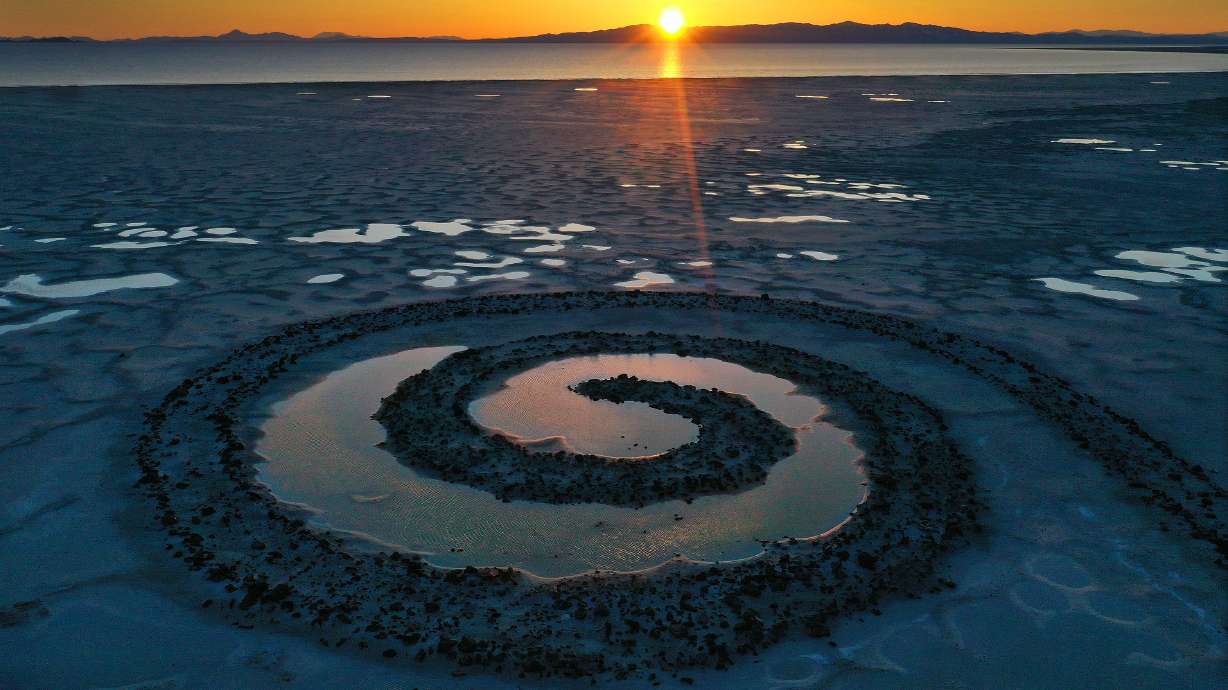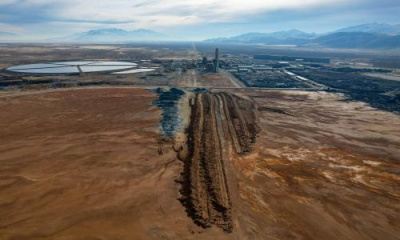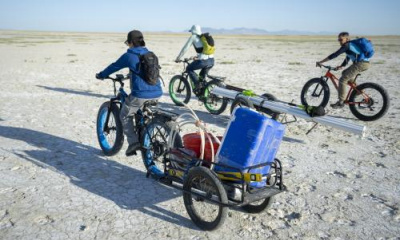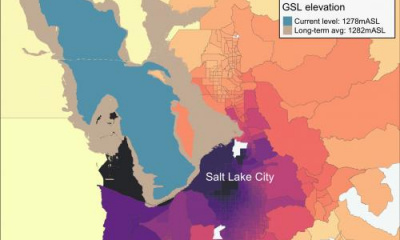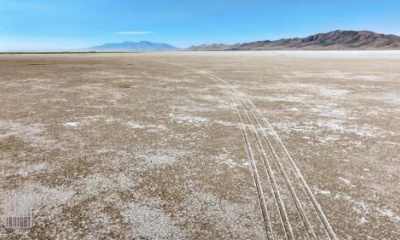SALT LAKE CITY — Brian Steed is still piecing together what his next job will entail, but he already has at least one goal in mind before becoming the state's first-ever Great Salt Lake commissioner.
He wants to make sure Utahns are still engaged in the process of helping the lake's recovery, because it's not going to happen overnight.
"I think we all have to avoid Great Salt Lake fatigue," said Steed as he spoke with members of the Great Salt Lake Collaborative Tuesday, after expressing his concern that people may revert back to practices that helped drain the Great Salt Lake over the past few decades. "I think that those kinds of small changes and choices (in water use) can make a big impact, collectively."
Utah Gov. Spencer Cox nominated Steed, the executive director of Utah State University's Janet Quinney Lawson Institute for Land, Water and Air, to be the state's first-ever Great Salt Lake commissioner last week, pending confirmation by the Utah Legislature. It's unclear when that confirmation will take place, but Steed could begin his new job — while retaining his current job — as early as July 1.
If and when he is confirmed, he's ready to hit the ground running because his team will have to put together an initial report for Utah leaders by November.
What does a Great Salt Lake commissioner do?
The Utah Legislature approved a bill that created the role of Great Salt Lake commissioner this year. The commissioner is tasked with meeting various agencies that study the lake and with Utah government leaders, as well as preparing "an approved strategic plan for the long-term health" of the lake, according to HB491.
That's sort of what Steed was already doing. He, his USU colleagues, members of the University of Utah and three state agencies joined forces to create the Great Salt Lake Strike Team, a coalition of some of the state's top research minds together to come up with solutions to the drying lake. The team issued a report earlier this year that offered lawmakers a look at what happened to the Great Salt Lake and what they can do to help fix the problem.
The new job comes with at least some level of policy power, though.
Cox explained that the new position comes with a "lot of authority" to bring all the governor's cabinet members and the state's water managers together, when he was asked about this during his monthly meeting with Utah journalists last week. The commissioner also reports directly to the governor and legislative leaders on issues about the Great Salt Lake, making this leadership the "significant authority and leverage" with the job.
"This position is really unprecedented. We've never had a position like this," Cox said.
The job is also more of a "coordinational role" than any sort of regulatory role, Steed explained. A large part of the job is tracking Great Salt Lake data and identifying what is and isn't working at the moment so solutions can be discovered.
But he said having the ear of the governor and legislative leaders likely gives the position a "large policy lever to pull," especially when state agencies and water managers are able to find something that needs to be addressed from a legislative standpoint.
"Brian gets to walk into a room now with the full backing of legislative leadership, as well as the executive branch," Cox pointed out. "That's a pretty big deal."
The work continues
The Great Salt Lake is continuing to rise as a result of this year's record snowpack. The Great Salt Lake's Saltair Boat Harbor site is now up to 4,193.4 feet elevation — more than 5 feet above its estimated lowest point in November, according to U.S. Geological Survey data.
Yet, Steed points out that the primary factors that contributed to the Great Salt Lake's decline, such as water overconsumption, "have not changed" much over the past six months. The Great Salt Lake Strike Team's report found that between 67% and 73% of the lake's water is lost to "natural and human consumptive use."
In addition, some of the lake's toxic dust is still blowing into Utah communities during storm events even after all the water the lake has received this spring.
"My guess is we're going to see continued challenges on the Great Salt Lake ecosystem over longer time horizons," Steed said. "So while, yes, we're all very heartened by the recent year we've had, we still have great cause for concern."
This is why Utah leaders continue to expand their messaging around reducing water even after such a prolific winter, offering a new turf grass buyback program and launching a new public service announcement promoting the removal of ornamental grass lawns.
The report outlined other possible solutions, noting that programs to optimize agricultural water use and for water rights holders to lease their water to temporarily go directly to the lake are likely the state's best bang-for-your-buck options. It estimates that Utah could send 180,000 acre-feet of additional water to the Great Salt Lake just by reducing agricultural consumption by 15%, while the state's leasing program could net an additional 200,000 to 300,000 acre-feet of water.
These options are already in motion. Steed said he's eager to help negotiate potential leases, which could be similar to water donations made by The Church of Jesus of Christ of Latter-day Saints and Rio Tinto Kennecott over the past few years.
He added that the strike team report is a "good first start" when it comes to future policy, clarifying that the report offered a slew of options to consider more than it provided guidance. The team is already set to issue a follow-up report later this year, but he believes his role is to come up with a game plan for the lake.
"Quite candidly, I think there's really good information in (the report) and I think it would be foolish to put that aside," he said. "There's lots of good information out there. Part of what I think we need to do is to synthesize that into something more actionable."
Fighting lake 'fatigue'
Every dataset right now points to 4,198 feet elevation as being the Great Salt Lake level objective at the moment. Researchers say that it's the minimum level for the lake to still be considered healthy. It's not exactly clear how quickly the lake can return to those levels unless there's another record winter or Utahns drastically change the way they view water, Steed said.
This uncertainty means that the same message about saving water will continue to play out for a long, long time. Steed said he's hopeful that it becomes a message that Utahns ingrain in their daily habits, much like residents have in other dry places across the globe like Isreal.
The ultimate goal is to avoid the toughest possible conversation, which could be whether Utah should spend billions of dollars on a pipeline to bring water to the Great Salt Lake or spend billions to mitigate all the dust from the dried-out lake.
Avoiding that debate will likely require ways to keep people engaged in the process, which could be simply reflecting back at the "successes" made in the long journey to protect the lake, Steed says. One of the early wins so far is acknowledging the importance of the lake and finding ways to try and save it.
"I think there's this fear we're all looking at Sisyphus pushing this rock up the hill and it's just exhausting ... and no one ever stops to look and say 'we've actually made some effort in pushing the rock up the hill," he said. "We've made some gains and those choices, those changes have made an impact."

